Since the absorption of Crimea in 2014 by Russia, the Kremilin continues with its advances on the territory of Ukraine. In December 2021 and January 2022, this advance became more explicit with the deployment of more than 100,000 troops on the country’s border.
The conflict between Russia and Ukraine not only mobilizes these two countries, but also NATO and the European Union mainly. There are tensions over the maintenance of Russian interests in Eastern Europe, the Caucasus and Central Asia, as they are over the so-called “Russian sphere of influence”.
The biggest problem of this situation is in European and American interests, since a Russian assault to try to maintain its influence can weaken can go against them.

What is “Sphere of Influence” in International Relations
Political relations between countries are based on agreements and alliances, whether formal or imposed by power.
The Sphere of Influence is a spatial/territorial region or concept of an area, in which a State or an Organization has economic, military, political or cultural exclusivity. It is a form of “soft power”, a mediator of international relations.
A formal alliance agreement, such as Quirinal Treaty, do not necessarily concern the relations of the Spheres of Influence and power. Influence relations can be more subjective and be materialized by sharing the use of a language, cultural traditions, a common past and several other aspects that are not achieved with formal agreements.
Spheres with great power of influence over others can result in satellite countries or even colonies, as was the case of the post-war Soviet Union. This historical relationship between socialist countries is what motivates and gives freedom of action to Russia and its formation of a contemporary sphere of influence.
It is a strategic concept that composed the relationship in the Cold War between the United States and the USSR. The US with its sphere of influence of Western Europe and Latin America and the Soviet Union with its influence in Eastern Europe. However, technically, the concept of Sphere of Influence would have fallen into disuse with the end of the Cold War.
What is the history of the Sphere of Influence of Russia
In the past the Soviet Union and the Warsaw Pact established a relationship between the countries of Eastern Europe that impacts the international scene to the present day.
For more than 30 years since the dissolution of the USSR, the military growth of Russia gives room for an attempt to regain power over the other former Soviet socialist republics.
Russia is one of the great military powers on the world stage and it can use this power to impose influence in border countries. But in the Russian case it is also in a cultural field of search for union between countries with the common past.
Putin is seeking to revive and strengthen the former sphere of influence, but many of the countries that belonged to this sphere already have an alliance with the European Union or NATO. Such as Poland, Latvia, Lithuania, Estonia, Czech Republic, Bulgaria, Hungary, Slovakia, Albania and Romania.
The Collective Security Treaty Organization (CSTO) of the Eurasian military alliance and led by Russia, is a concrete way of acquiring alliances between countries that formed the former Soviet Union. With this agreement, there is a search for Russia to strengthen the security architecture in Eastern Europe, Caucasus and Central Asia, thus allowing a growth of Russian geopolitical power.
The conflicts between the Kremilin and Ukraine are mainly due to the interest of Russia not to lose its sphere of influence in the second most important republic of the Soviet Union after Russia itself. The Russian threats concern the possibility of Ukraine’s more active participation in NATO and the association agreement with the European Union, thereby undermining Russian interests in the region.
Using hybrid tactics, Russia seeks to reaffirm its spheres and its power of influence, because by making threats you can destabilize countries that do not follow your political line.
Therefore, the Russian interest is not in remaking an empire necessarily, but to establish new dependency relations under these countries so that they can implement their interests in a facilitated way and gain even more voice in the international geopolitical game and thus decrease the hegemony of the United States and the West in general.
How Ukraine’s and Georgia’s rapprochement with the West (European Union and NATO) affects Russia’s desire to maintain a Sphere of Influence in its neighbourhood
The conflict with Georgia in 2008 and with Ukraine since 2014, are situations that make clear the interest of Russia to maintain a sphere of influence in the former Soviet republics.
Since the independence of the Soviet republics and socialist countries , there is an interest on the part of the European Union in integrating these nations economically and politically and NATO to integrate them militarily.
Putin has already made several statements about how he believes that the advance of NATO and the European Union in its neighbouring regions is seen as a threat to Russia itself. The search to strengthen itself through former allies is the prospect of Russia to remake its alliances from the Cold War period.
NATO and EU expansion to the east
The participation of NATO and the European Union in Central and Eastern Europe did not exist during the Cold War. This investment of the two organizations in the region starts from the 1990s and occurs in various forms, such as by direct association (these countries becoming members of NATO or EU) or via developmental plans financed or supported by those same institutions.
However, with NATO and the EU participating more actively in these regions, Russia loses its power over these target countries of the West. The economic and political rivalry between the Eastern countries and the West is the big issue of this conflict.
Since the fall of the Berlin Wall in 1989, the end of the Warsaw Pact and Soviet socialism, several of these countries have become members of NATO and the EU, which allowed these institutions to be more present in Eastern Europe.
The socialist countries were the Soviet Union, East Germany, Bulgaria, Hungary, Poland, Czechoslovakia and Romania (which were part of the Warsaw Pact), as well as Albania and Yugoslavia which were socialists but were not part of the alliance.
West Germany entered NATO in 1955 (and East Germany when it reunited with West Germany in 1990); the Czech Republic, Hungary and Poland entered in 1999, followed by Bulgaria, Slovakia, Slovenia, Estonia, Latvia and Lithuania in 2004; Albania joined NATO in 2009 and Montenegro and North Macedonia are the newest members, entering in 2017 and 2020 respectively. Bosnia and Herzegovina is under consideration for entry.
If Ukraine and Georgia definitively enter into the NATO protection agreement as members, the United States and the EU would increase their presence in the Russian sphere of influence, being even closer to threatening the power of Russia.
Technically there is no security commitment between NATO and Ukraine or Georgia, as they are only partners and “aspiring states” and cannot invoke Article 5 of mutual defense. The decision on final entry into NATO must be made by the 30 participating Member States, and most see it as a greater risk than an advantage since they would be going against Russia and its plans.
In addition, to become an effective member of NATO, the candidate country must have full control over its territory. And that is not the case for Ukraine and Georgia. The government of Ukraine has no control over part of the Donbas region in the east and Georgia has no control over the provinces of South Ossetia and Abkhazia.
In addition, to become an effective member of NATO, the candidate country must have full control over its territory. And that is not the case for Ukraine and Georgia. The government of Ukraine has no control over part of the Donbas region in the east and Georgia has no control over the provinces of South Ossetia and Abkhazia.
Even so, in Ukraine there is a clear preference for aligning with the West. A study says that 54% of Ukrainians are in favor of joining NATO, 58% support entry into the European Union and 21% support participation in the Eurasian economic bloc.
In 2009, Russia declared that the European Union’s advance to the East was a way to establish a sphere of influence as well, however Sweden spoke at the time saying that the difference between the EU alliance and a relationship of influence is that these countries wanted to join the Union and NATO.

The Eastern Partnership of the European Union
The Eastern Partnership of the European Union was an initiative of European enlargement initiated in 2009 in the post-Soviet countries of the South Caucasus and Eastern Europe: Ukraine, Georgia, Belarus, the Republic of Moldova, Azerbaijan and Armenia.
The Eastern Partnership is a specific Eastern dimension to the European Neighbourhood Policy (ENP). Through the ENP, the EU works with its southern and eastern neighbours to achieve the closest possible political association and the greatest possible degree of economic integration.
European Council
Within the Partnership negotiations there are the “association agreements” that are part of EU policy and provide for:
- the strengthening of political association;
- the strengthening of political dialogue;
- a closer cooperation in the field of justice and security.
It is a plan of reforms with the central objective of rapprochement with partner countries of the Union, with improvement of legislation and standards that allow further development and closer relations.
There were many discussions about this initiative, since these countries were under Russian dependence and influence, mainly with Belarus, since they have a government considered authoritarian and have strong alliance with Moscow for being part of the CSTO. In June 2021, Belarus definitely left the alliance.
But there is a limited EU action since they also have dependency ties with Russia, failing to advance without affecting the Russian security interest zone.
Josep Borrell says that the Russian implication on progress in Eastern Europe is a search to return to the time when Europe was commanded by powers of influence, and together with the US threatened to impose sanctions if Russia really invaded Ukraine.

What is the alternative to geopolitical “spheres of influence”
Strengthening the national sovereignty of the States would be the way out to not be under the influence of other countries, but this is not so easy to achieve.
Mainly countries like Georgia and Ukraine, do not have the security of economic growth or independence of political power to allow a strengthening of their national sovereignty.
International relations are based on the demands and offers that countries have among themselves, requiring the formation of partnerships for their defense, security and economic prosperity.
However, the independence to be assured of external influences is more difficult to achieve. It is not simply achieved by a socioeconomic strengthening, but by active participation with other countries.
As much as countries in the insecurity of the Russian sphere of influence may ally with NATO and the European Union, would they not be entering another power relationship? However, there is a big difference when this alliance is imposed by a stronger country (Russia) or democratically chosen by the country itself, thus demonstrating its sovereignty in choosing its alliances.
The geopolitical game is made of context, power and interest, and sometimes establishing alliances and putting yourself in a dependency association is one of the main examples of national sovereignty.
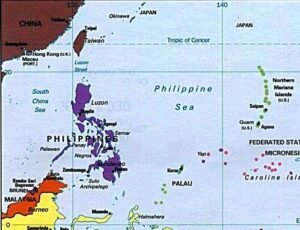
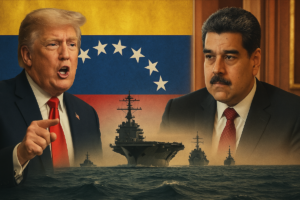


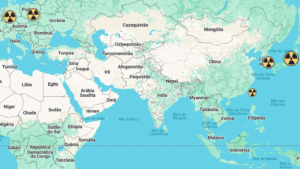
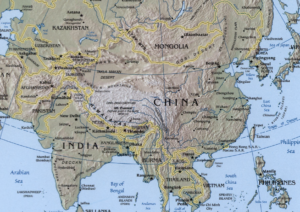

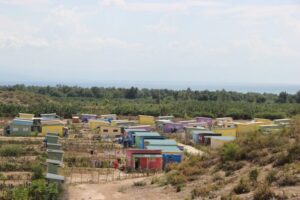








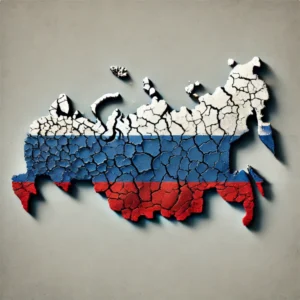
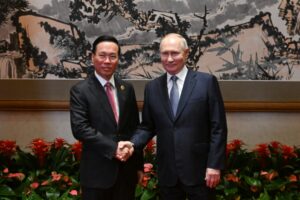

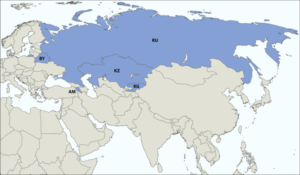

[…] decreasing the participation of the West in Europe, mainly of the United States and thus remake its sphere of influence in it. But NATO is becoming increasingly essential in the defense of its members and allies, so […]
[…] and how this is a trend in the geopolitical scenario, as a means to ensure autocratic regimes and spheres of influence, a form of “protective integration”. The main objective is to promote a “culture of […]
[…] we can see what’s happening in Ukraine mostly through 2 different angles. The Russian’s “spheres of influence” and the geopolitical imbalance of power within Europe. Through this angle, someone would mostly […]
[…] expansion into Eastern Europe. He complained that Ukraine, which was, according to him, within Russia’s sphere of influence, was turning to the West. He also came up with some obviously false excuses such as Ukraine being […]
[…] relations with the other self-governing islands, in which they consider themselves part of the sphere of influence of China. At the same time, Australian opposition politicians reported that parliamentarians earned […]
[…] If there were an advance of Russia on the border, which becomes more possible considering that Kaliningrad and Belarus are extremely militarized, the Baltic would lose access by land to the rest of NATO. This follows Putin’s agenda in decrease NATO’s presence in Eastern Europe. […]
[…] for Russia, it is increasingly losing strength in its “sphere of influence” because of its aggressive and expansionist policies towards its neighbors. This demonstrates […]
[…] A weakened and defeated Russia would see its influence wane and even disappear in its near sphere of influence as well as in faraway […]
[…] Uma Rússia enfraquecida e derrotada veria sua influência diminuir e até mesmo desaparecer em sua esfera de influência próxima, bem como em terras […]
[…] weakening of the Collective Security Treaty Organization further undermines Russia’s sphere of influence, which is mostly the countries of the former Soviet […]
[…] country’s sphere of influence in the international community is measured by several factors, such as its cultural, […]
[…] has historically sought to extend its power and increase its sphere of influence, and this may raise concerns about the possibility of Russian interference or aggression in […]
[…] a result, the region will witness a further weakening of the power and influence of Russia and the countries of the CSTO – a NATO-like military alliance between several countries in […]
[…] Among the main reasons, defended by Vladimir Putin, for Russia’s invasion of Ukraine are the expansion of NATO in Eastern European countries, the possibility of Ukraine joining the group and Putin’s search for a re-establishment of the former’s zone of influence of the former Soviet Union. […]
[…] countries were part of this bloc, but since then, they have gained independence, although they still heavily reflect Soviet influence in their history and […]
[…] Eurasian Economic Union, led by Russia, has former Soviet countries as members for the purposes of economic and eventually political collaboration. As in the case of the European […]
[…] has always considered Armenia as part of its “privileged sphere of influence“, but Armenian criticism of Russian inaction in the face of Azerbaijani aggression and the […]